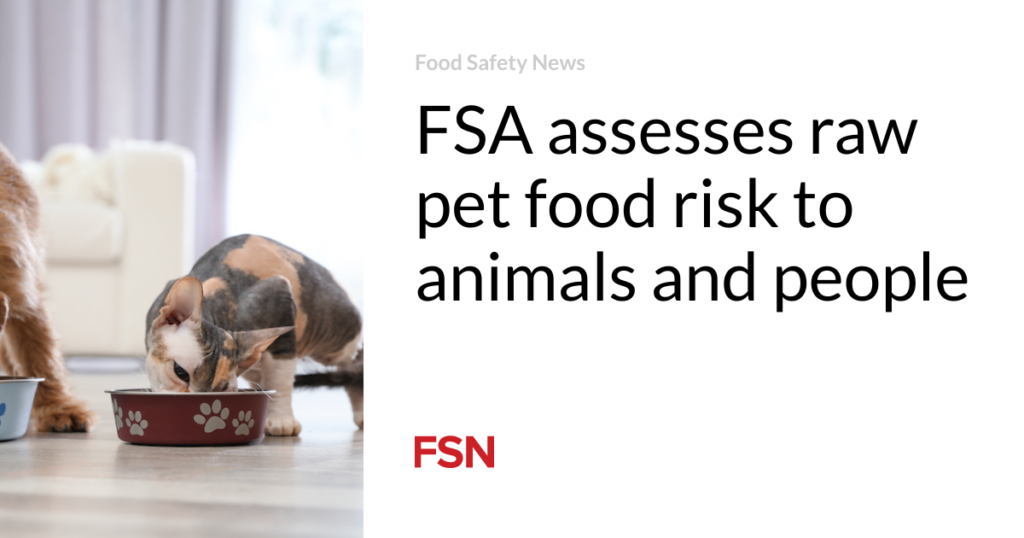The Food Standards Agency (FSA) has analysed the risks posed by eating contaminated raw pet food for dogs and cats, and the impact on people who feed them such products.
Raw pet food has become increasingly popular in recent years. These products are made from Category 3 Animal By-Products (ABPs) that have been approved by slaughterhouses as suitable for human consumption, but in excess of what is needed. They are not cooked or heat-treated, which could contaminate the final product with pathogens. Most are sold frozen and typically have a shelf life of more than a year.
The assessment considers the risk to dogs and cats of contracting Salmonella, β-glucuronidase-positive E. coli, Shiga toxin-producing E. coli (STEC), Campylobacter and Methicillin-resistant Staphylococcus aureus (MRSA) from contaminated products, and also covers the risk to animal owners of infection from handling these products in the home or through transmission from infected pets.
There is uncertainty about the prevalence and symptoms of clinical infection in pet animals, and about how raw pet food is handled, stored and prepared in the home. The number of vulnerable pet owners who use raw pet food is also unknown.
A recent study by the FSA testing raw dog and cat food sold at retail in the UK between March 2023 and February 2024 found a high prevalence of these pathogens. While the full findings have not yet been published, results from 306 of 380 samples showed that 20 per cent tested positive for Salmonella, 11 per cent for Campylobacter, 9 per cent for MRSA and 11 per cent for STEC.
The study also found that packaging advice varied widely between manufacturers. Some product labels included instructions such as washing hands after handling and storing away from human food. But other labels had no handling instructions.
Risk from pathogens
FSA guidelines for raw pet food include hygiene practices such as washing hands after handling, storing the product away from human food, and cleaning all surfaces that come into contact with the product. Poor handling and hygiene practices can lead to cross-contamination and human infection.
In August 2017, four people were infected with a genetically related strain of STEC O157:H7. One person developed hemolytic uraemic syndrome (HUS) and died. Interviews with the cases revealed that three had been in contact with dogs that had been fed a raw meat-based diet, specifically tripe. In two cases, the tripe had been purchased from the same supplier.
The risk to dogs and cats from consuming raw pet food contaminated with Salmonella is moderate, meaning that it occurs regularly, and the level of uncertainty is medium.
The risk to these animals from ingesting raw pet food contaminated with Campylobacter is considered low, meaning that it is rare but possible. For STEC, the risk was determined to be low for dogs and very low for cats.
The risk to pet owners of contracting Salmonella, Campylobacter or STEC from handling contaminated products in the home is considered low. The likelihood of human infection depends on hygiene practices when handling food and disposing of waste.
(Click here to sign up for a free subscription to Food Safety News.)



